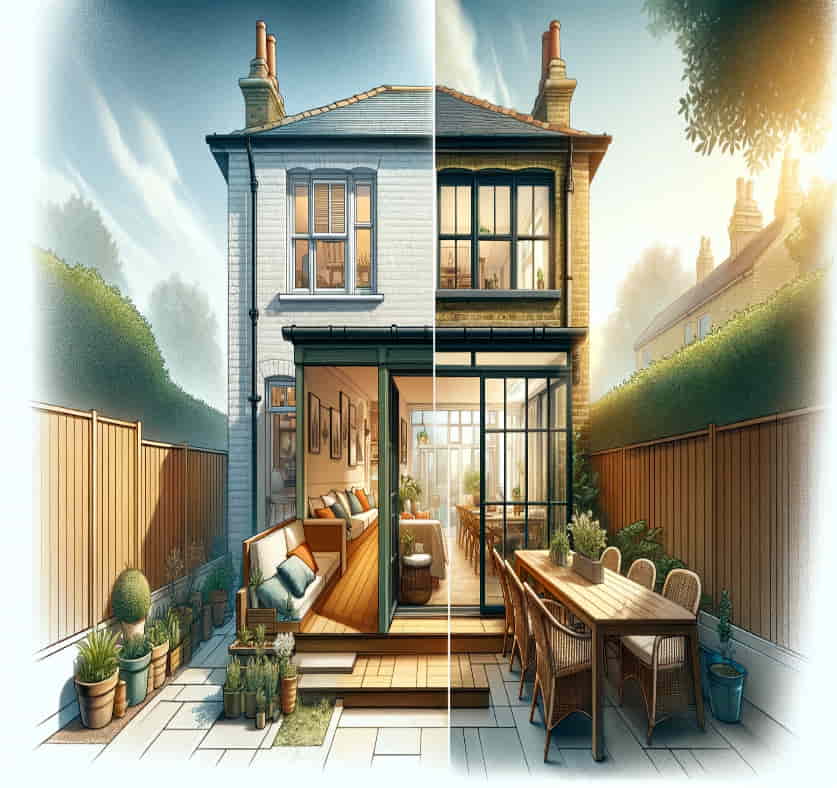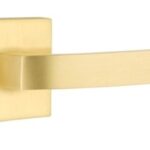Space-Saving Solutions: Why Side Return Extensions Are Ideal for Urban Homes

Living in an urban area comes with many benefits, such as access to amenities and public transport. However, it also means limited space, especially in older homes built decades ago when families were smaller. As housing costs continue rising in cities like London, families are looking for ways to maximize their existing space rather than move farther out. One excellent solution is adding a side return extension.
What is a Side Return Extension?
A side return refers to the space between a house and the boundary line on one side. It is a small area next to the main building. A side return extension builds out from the house into this narrow area to create a new room.
Side returns are common in Victorian terraced houses and other urban homes built in the late 1800s or early 1900s. Many have 10-15 feet or 3-5 metres of unused land on one side. Adding an extension into this unused area can add valuable living space without the high costs of a full-scale renovation or move.
Benefits of Side Return Extensions
There are many excellent reasons side return extensions are an ideal space-saving solution for urban families in the UK:
1. Add Extra Room
The most obvious benefit is gaining an extra room, which can serve many functions. Popular options are expanding the kitchen, adding a downstairs bathroom, creating a playroom for kids, or building an additional bedroom. Even a modest 8 feet x 10 feet or 3 metres x 2 metres extension can make a noticeable difference. The expanded footprint provides a more usable interior floor area.
2. Increase Property Value
Adding living space naturally boosts a home’s resale value in the UK housing market. Recent data shows the average cost of side return extension in London is between £25,000 to £50,000, but adds £90,000 to £140,000 to the property value. That’s a significant return on investment for homeowners.
3. Bring in More Natural Light
Many older urban homes suffer from limited natural light, especially in the middle rooms. A side return extension can change this by creating wider windows or adding more windows along the new exterior wall. More daylight makes rooms feel more open and inviting.
4. Enhance Layout and Flow
The fixed layouts of many aging urban homes aren’t ideal for modern families. A strategic extension creates opportunities to improve how rooms connect to each other. For example, moving the kitchen into a side extension may open space for a ground-floor bathroom or larger open-plan family room.
5. Use Dead Space
A narrow side return strip often turns into wasted space. An extension allows homeowners to capitalize on this dead zone and turn it into the valuable living area. Even an extra 3 feet or 1 metre creates a usable new room.
6. Add Storage
Finally, gaining additional space in a small urban home provides more storage capacity. Built-in cabinetry and closets are easily added into a side return extension. This hidden storage helps keep clutter under control.
Design Considerations
Homeowners will want to think about the following design factors when planning a side return extension:
Size
The dimensions of the side return determine the possible size of the extension. Typical extensions range from 8 feet x 10 feet or 3 metres x 2 metres up to 15 feet x 20 feet or 5 metres x 6 metres. Smaller homes may only accommodate a one-storey extension, while larger houses can consider two storeys.
Layout
How will the layout integrate with the existing floor plan? Be sure to locate doors, hallways, and windows to maximize flow. Extending the kitchen or bathroom requires carefully mapping plumbing lines.
Foundations
Most side extensions require extra solid foundations to structurally support the new footprint. This must be dug wider and deeper than the existing foundations.
Roof
Will the extension roof attach to the main house roof, or be completely separate? Coordinate roof lines and angles.
Windows
Add ample windows along the new exterior wall for light. But avoid windows that directly overlook neighbours and cause privacy issues.
Materials
Use materials that match the existing house, such as brick, stone cladding, or siding. Consistent materials give the addition a seamless, integrated look.
Cost
As mentioned previously, side return extensions in London average £25,000 to £50,000. The specific design choices will impact the final cost.
Planning Permission for Side Extensions
Homeowners must obtain planning permission from their local council before starting work on a side return extension in the UK. There are guidelines about maximum size and height. For example, in London, the extension cannot exceed 3 metres if adjoining a house, or 4 metres for a detached or end-of-terrace house.
The planning application requires drawings of the proposed design. Be sure to have clear communication with local planning officers. Most side extensions that fit within guidelines can be approved if designed appropriately.
Finding the Right Builder
Choosing the builder is one of the most important decisions for a successful side return extension project. Look for these traits when evaluating builders:
Experience: Seek examples of previous side extensions and talk to past clients. Look for expertise specifically with urban homes.
Quality: The builder should have a reputation for high-quality work and use of good materials. Quick and cheap construction often results in problems down the road.
Communication: A builder who listens to your needs and keeps you informed throughout the process makes the experience smoother.
Fair pricing: Get quotes from a few recommended builders and compare. Be wary of prices that seem too good to be true.
Timeliness: Make sure they can dedicate adequate project management and workers to complete the extension in a reasonable timeline.
Proper certification: They must have all required building permits and certifications.
Take time to carefully research and choose the right builder for your side return extension. This improves the likelihood of an end result you are satisfied with.
Conclusion
For families needing more usable space in their urban homes, a side return extension offers a convenient and cost-effective solution. Homeowners gain valuable living area by utilizing the unused side return area adjacent to their home. A well-designed extension seamlessly blends with the existing layout. It brings benefits like more natural light, enhanced interior flow, added storage, and increased property value – all without the high cost of moving. With proper planning permission and an experienced builder, a side return extension can help maximize your enjoyment of city living.







